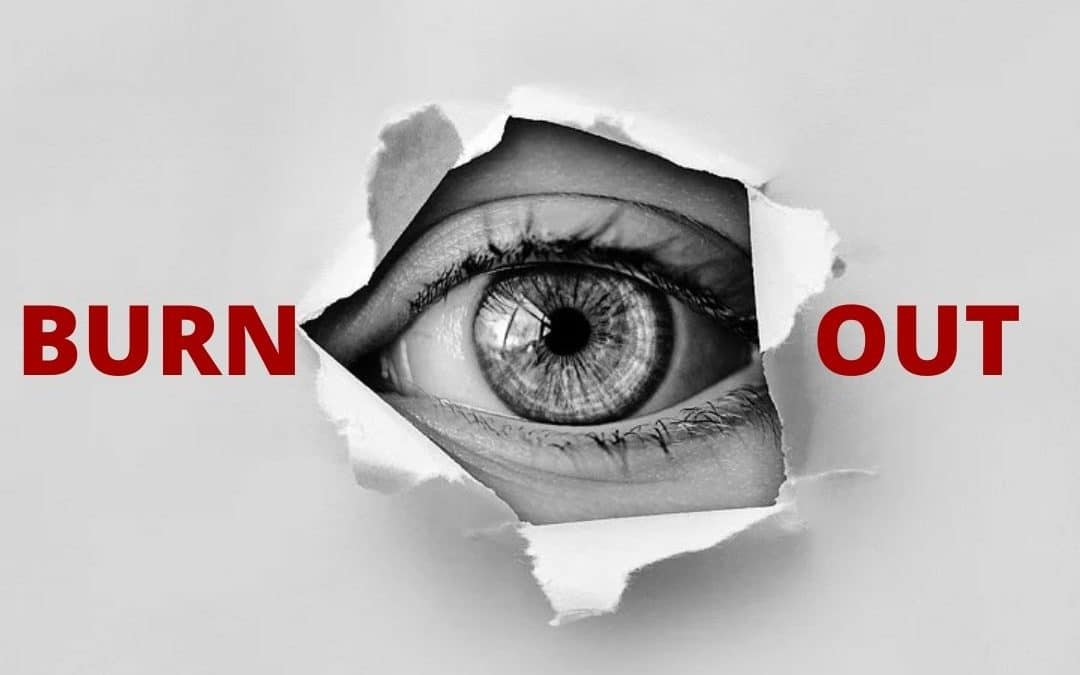According to the U.S. Bureau of Justice Statistics, about 2,000 people escape from prison each year. Considering that there are roughly 2.3 million individuals incarcerated in the United States, less than 1 percent of prisoners ever attempt this and many of those who do end up getting caught within days.
Luckily, the statistics for burnout are far more optimistic. That is, while a large percentage of workers tend to burn out at least once, the majority of them can recover, and if done right, they can break free from burnout without a recurrence of the problem.
Why Do We Burn Out?
Burnout happens for many reasons, but is often the result of overworking ourselves and falling out of balance. Its flagship markers include exhaustion, cynicism, and a decrease in self-efficacy, but can manifest in many other ways as well. To get a better sense of how burnout can show up and why, here are the stories of Todd, Tracy, Patricia and Chris.
Sometimes we burn out because of poor planning. For example, Todd was someone who cited lack of time management for his burnout. In his words, his schedule was “a disaster.” The struggle for him lied in being organized and focusing on “the right things.” He was always flying by the seat of his pants, always on the go, and never stopped long enough to plan how he could take time away from work, which is why he hadn’t been on vacation for two years straight.
People like Todd tend to overwork because of a fear of being stuck in a box. The idea of planning feels constricting and they like the notion of having flexibility to make in-the-moment decisions. But as with most things, when you lack balance, you pay the price. Even people who like this kind of freedom need to find some structure in their lives to ensure they are getting their needs met.
Tracy was someone who experienced stress due to environmental stressors. Her husband died unexpectedly, leaving her with a bankrupt company. On the home front, she had to tackle behavioral issues in her role as an emergency foster parent to an 18-year old boy while also taking care of her young adult autistic daughter. All this responsibility led her to feeling bogged down and emotionally overwhelmed.
Patricia is a 54 year old lawyer who was “working like mad.” She was desperate to prove herself due to the fear of not being good enough. Unfortunately, Patricia found herself in an abusive job and after putting in 100 hours per week, she was so exhausted that she developed adrenal fatigue and couldn’t get out of bed for 16 months.
Patricia’s story is a classic overworking scenario, but the underlying driver was the belief that she wasn’t enough. Many high achievers are driven by this same belief which leads to a compulsion to prove their worth, put their needs on the back burner, and go into work full speed ahead.
Burnout can result from external circumstances that create internal stress as we saw with Patricia,Todd, and Tracy. In addition, you can get burned out from demands you put on yourself. As an example, Chris was someone who faced constant anxiety. His mind kept coming up with worst case scenarios which led to disturbed sleep. He described his experience as being “driven through a brick wall.”
Why Do We Stay Stuck in Burnout?
Regardless of whether you burn out due to poor planning, environmental stressors, a need to prove our worth, or anxiety, one thing is clear. It’s not only important to understand what led you to burnout, but what will get you out of it.
The trouble is, too often burnout recovery is approached as a one-size-fits-all solution. People recognize they are stressed and overwhelmed, that they haven’t been apart from work enough, and that their lives have fallen out of balance. The logical solution is to take time off from work as in a vacation, to step back in their role, or to step out altogether to minimize the demands.
This approach is understandable given that, as we saw in the cases of Todd and Tracy, the demands of work can take physical and mental toll on us. But when we dig deeper we see that it takes more than time away to transform our experience at work.
Too often we stay stuck in burnout because the solutions we adopt aren’t adequate. They might be temporary reprieves, but if all you do is take a vacation and then return to work in the same way as before, even if you’ve recovered during your time away, you will burn out again and again.
Freedom from Burnout
I like to think about burnout as a sign that our approach to work and life is unsustainable. If that’s the case, it makes sense that the solution when we burn out isn’t to check a box and go right back to business as usual. We need to find more balanced ways to engage that sustain our energy, motivation, and health.
Todd’s burnout was a result of overworking, but when we dig down, we see the solution isn’t necessarily in working less, but in planning out his day. What Todd needed was to feel empowered about making his own schedule without being put in a box. Instead of being pulled in 18 directions because things would inevitably “pop up,” leading him to fall behind, he needed to learn how to say no, take time to catch up on work at the end of each week, and take time off to unplug and recharge.
As we saw with Tracy, burnout isn’t always related to work. It’s the cumulative effect of stress in our life and sometimes that stress comes from outside of work. Tracy had a lot of responsibility on her shoulders. What would help someone in her position is learning how to manage the stress and get more support.
Patricia’s burnout story stemmed from her feeling of inadequacy which led her to prioritize work over all else. In her case, she would benefit from working on reshaping her beliefs about her worth so she can feel good without having to prove anything to anyone.
Finally, Chris’s stress was a result of his own mind which focused on everything that could go wrong. By managing his thoughts, Chris would be able to redirect his mind to what he wants rather than what he doesn’t want to see happen. This would give him the peace of mind to rest at the end of the day and recharge his batteries.
Conclusion
If you’re a full-time employee, chances are you’ve burned out at some point in your career. The trouble is people often don’t realize that what they are experiencing is burnout. Even when they can accurately diagnose the problem, they may not understand what got them there or what to do about it.
True freedom comes from being in control of your mind because it is the one thing you have control over, that affects how you feel, what you do, and the results you get. Life’s circumstances aren’t always going to be easy or fair. When we focus on the right things, though, we can more easily problem-solve, set boundaries, get the support that we need, and live in a more balanced way.
—————————-
Do you want to get my Burnout Checklist for free?
I’ve created a checklist to help you identify signs of burnout and steps to take to get immediate results. Curious?
Click here to get the checklist.
Author



Recent Comments